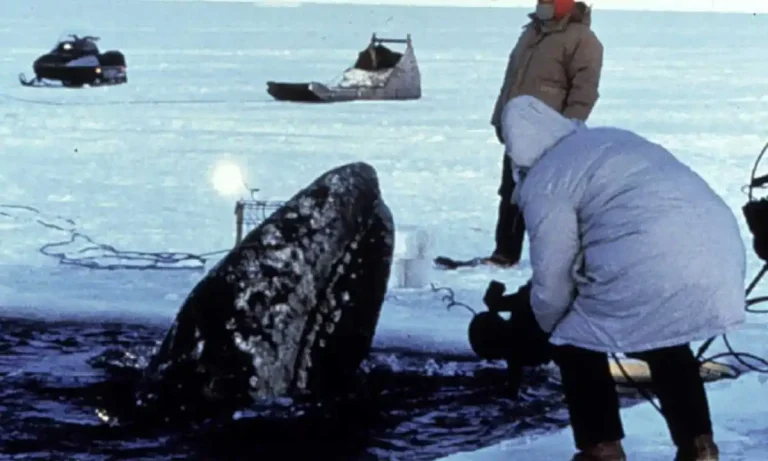Top 7 World’s Biggest Nuclear-powered Icebreaker Ships In 2024 | Powerful Vessels Navigating Thick Ice!
Navigating the icy waters of the polar regions is no easy feat, and that’s where icebreaker ships come in. These powerful vessels are crucial for maintaining maritime routes in the Arctic and Antarctic. They ensure that ships can pass safely through thick ice. One of the most fascinating aspects of modern icebreakers is their use of nuclear power, which allows them to operate for long periods without needing to refuel.
As interest in the Arctic region grows, so does the technology behind these incredible ships. One vessel that stands out is the NS Yamal, often considered the strongest ship in the world. But there’s more. Let’s dive into the top 7 biggest nuclear-powered icebreakers in 2024.
1. Arktika

The Arktika is a Russian nuclear-powered icebreaker. This is the largest and most powerful icebreaker ever constructed.
Dimensions and Build: The Arktika is 173.3 meters long and has a maximum beam of 34 meters. It is designed to operate efficiently in both shallow Arctic river estuaries and along the Northern Sea Route.
Powertrain and Propulsion: It has a nuclear-turbo-electric powertrain with two 175 MWt RITM-200 reactors. The ship has three 6.2-meter four-bladed propellers driven by 20-megawatt electric motors.
Icebreaking Capability: The Arktika can break through 2.8-meter-thick ice at a continuous speed of 1.5–2 knots, making it a formidable force in the icy waters.
2. Sibir

The Sibir, similar in dimensions to the Arktika, is another powerful icebreaker that can withstand tough Arctic conditions.
Dimensions and Design: Like the Arktika, the Sibir is 173.3 meters long with a maximum beam of 34 meters. The ship’s ingenious design helps in operating efficiently in shallow Arctic river estuaries.
Powertrain and Propulsion: It has two 175 MWt RITM-200 reactors and two 36 MWe turbogenerators, driving three 6.2-meter propellers with 20-megawatt electric motors.
Icebreaking Capability: The Sibir can break through 2.8-meter-thick ice at speeds of 1.5–2 knots, ensuring smooth navigation through harsh conditions.
3. NS 50 Let Pobedy

The NS 50 Let Pobedy is another impressive icebreaker from Russia, with unique features and robust capabilities.
Design and Dimensions: This ship is 159.60 meters long and 30 meters wide, featuring a spoon-shaped bow for better icebreaking efficiency.
Innovative Features: It has a digital automated control system and modernized biological shielding. Onboard facilities include a swimming pool, library, and restaurant.
Icebreaking Capability: The NS 50 Let Pobedy can break through ice up to 2.5 meters thick, making it a valuable asset in polar regions.
4. Taymyr

The Taymyr is another powerful vessel that takes the design for versatility and reliability.
Design and Build: With a length of nearly 150 meters and a beam of 28 meters, the Taymyr has a traditional icebreaker hull with highly raked stem and sloping sides.
Operational Versatility: It has an ice class LL2 rating, allowing it to operate in rivers and estuaries. Its shallow draught makes it adaptable to various Arctic conditions.
Safety and Reliability: The Taymyr has duplicated critical systems and is designed to withstand high-impact collisions.
Icebreaking Capability: It can operate in level ice up to 2 meters thick, ensuring it can handle most Arctic challenges.
5. Yamal

The Yamal is a well-known icebreaker with a unique history and impressive capabilities.
Design and Features: The Yamal has a double hull with a polymer coating to reduce friction. It also features an air-bubbling system to assist with icebreaking.
Operational Use: It has carried passengers on Arctic excursions and North Pole voyages, offering amenities like a heated swimming pool and sauna.
Icebreaking Capability: The Yamal can break ice while moving forward or backward, showcasing its versatility in the polar regions.
6. Viktor Chernomyrdin

The Viktor Chernomyrdin stands out as the largest and most powerful diesel-electric icebreaker built in Russia.
Construction and Dimensions: It measures 173.3 meters in length and 34 meters in beam, making it a massive vessel.
Operational Delays: The completion of this icebreaker was delayed due to a fire and cost disagreements, but it remains a critical addition to the fleet.
Icebreaking Capability: Designed to break thick Arctic ice with advanced diesel-electric power, it is built to tackle the harshest conditions.
7. RRS Sir David Attenborough

The RRS Sir David Attenborough is a British ice-class research vessel with a focus on Antarctic exploration.
Purpose and Design: It is built to carry two helicopters and has a cargo capacity of 900 cubic meters.
Operational Use: The ship supports logistics and research in the Antarctic, with accommodation for 30 crew and 60 research staff.
Icebreaking Capability: It can break up to 1-meter thick ice at a speed of 3 knots, making it a vital tool for scientific missions.
Conclusion
Icebreaker ships play a crucial role in maintaining routes in the Arctic and Antarctic, enabling safe passage and supporting scientific research. The advancements in icebreaker technology, particularly the use of nuclear power, have made these ships more powerful and capable than ever before. The top seven icebreakers in 2024, from the mighty Arktika to the versatile RRS Sir David Attenborough, showcase the incredible engineering and design that go into these vessels. These ships are not just tools of navigation but also marvels of modern technology, paving the way for further exploration and understanding of our planet’s polar regions.
Also read,







